When we look at the Hisense E7NQ PRO in everyday use, it is immediately apparent that this is a television designed with a broad range of viewers in mind. The picture, although not breathtaking at first glance, gains a lot after proper calibration. The colours appear more natural, and a brightness level of around 500 cd/m² makes it comfortable to watch in a sunlit living room. The wide viewing angles offered by the IPS panel are an additional plus – we no longer have to fight for the best spot on the sofa. Dolby Vision can enhance the overall experience, and in SDR mode, the television delivers a truly pleasant image. Sports and gaming fans will find even more reasons to be satisfied here. High refresh rates (144 Hz) guarantee smooth ball movements on the pitch, while low latency, VRR, ALLM, and compatibility with G-Sync and Dolby Vision in games cater to those who value responsiveness and immersive gaming experiences. Because of all this, the E7NQ PRO becomes an interesting proposition for computer gamers as well. The VIDAA system works quite well – there are plenty of applications, although it lacks music-specific ones like Spotify or Tidal. However, you can expect recording, AirPlay, mirroring, and decent cooperation with wireless devices. Yes, there are certain shortcomings and imperfections – especially regarding subtitle support from USB or perfect management of brightness and contrast, and the absence of HGIG may disappoint the most demanding gamers. When we gather all the impressions and experiences, the E7NQ PRO emerges as a device that will perform well in many situations. It has its advantages – such as wide viewing angles, pleasant images after calibration, numerous additional functions, and excellent motion fluidity in sports or games. At the same time, it is important to remember that this is not a television intended for those seeking perfect experiences for evening viewings in total darkness. In low lighting, the deficiencies in contrast and black levels become more pronounced, so we suggest that individuals who primarily plan evening screenings look for alternatives among competitors. Nevertheless, as a versatile solution for everyday use – from watching television in a bright living room to playing console and computer games – the E7NQ PRO performs really solidly.
- Matching (Score)
- Our verdict
- TV appearance
- Where to buy
- Contrast and black detail
- HDR effect quality
- Factory color reproduction
- Color reproduction after calibration
- Smoothness of tonal transitions
- Image scaling and smoothness of tonal transitions
- Blur and motion smoothness
- Console compatibility and gaming features
- Input lag
- Compatibility with PC
- Viewing angles
- TV efficiency during daytime
- Details about the matrix
- TV features
- Apps
- Playing files from USB
- Sound
Hisense E7NQ PRO vs TCL C6K
Direct compare
C6K / C69K / Q6C


Panel type: LCD IPS
Resolution: 3840x2160
System: VIDAA
Model year: 2024
Complete the survey to find out the result

Panel type: LCD VA
Resolution: 3840x2160
System: Google TV
Model year: 2025
Complete the survey to find out the result

Overall rating
7.0
7.1
Movies and series in UHD quality
6.4
6.7
Classic TV, YouTube
6.3
6.6
Sports broadcasts (TV and apps)
6.6
6.3
Gaming on console
8.0
8.4
TV as a computer monitor
7.6
8.6
Watching in bright light
6.2
6.4
Utility functions
8.9
7.0
Apps
7.7
9.6
Sound quality
7.0
6.5
Complete the survey to find out what fits your preferences
Advantages
Wide viewing angles thanks to the IPS panel
Good colour potential after calibration
High refresh rate (144 Hz), VRR, ALLM and G-Sync for gamers
Support for Dolby Vision
A considerable number of additional features (recording, AirPlay, mirroring)
Support for key audio formats (Dolby Atmos, DTS:X)
Relatively low input lag
Very good contrast and black: VA panel and MINI-LED backlighting
Good motion smoothness: High refresh rate of 144Hz
Not bad brightness of the panel
Many features for gamers: VRR, ALLM, HDMI 2.1, HGiG
Additional mode for PC gamers: 240Hz
Google TV system with a wide selection of applications
Support for multiple HDR formats including Dolby Vision
Support for Dolby Atmos and DTS
Very attractive price
Disadvantages
Average contrast and black level
Issues with subtitle playback from USB
Missing support for HGIG
Brightness management issues in HDR in some scenes
Unavailability of some popular music applications (Spotify, Tidal)
Managing the backlighting could be better
Language errors in the system
Our verdict
The TCL C6K is a television for those who want to combine gaming and watching films with good contrast, while not spending a fortune. Thanks to the VA panel with Mini-LED backlighting, blacks are deep, and the contrast is high, making evening screenings truly impressive. Additionally, there is decent brightness, which combined with Dolby Vision allows films to take on a cinematic quality. The smoothness of the picture is also noteworthy – the 144Hz refresh rate works wonders for sports or dynamic games, and gamers receive a full package of extras: VRR, ALLM, HDMI 2.1, HGiG, and even a 240Hz mode on PC. On a daily basis, the television runs on Google TV, which offers a plethora of applications and the Gemini AI voice assistant, making it convenient and flexible to use. It’s also worth mentioning the sound – support for Dolby Atmos and DTS gives the impression that the device is ready not only for gaming. As is often the case, there are a few things that could be improved. The backlighting can lose details or illuminate blacks in challenging scenes, and Polish translations in the menu are sometimes so awkward that one has to ponder what they actually mean. Despite this, the overall performance stands out very well, and considering the price, the TCL C6K could be one of the more interesting choices for anyone looking for a versatile television for films, sports, and gaming. Especially when a good promotion comes along – and when TCL traditionally polishes the small details in updates.
TV appearance




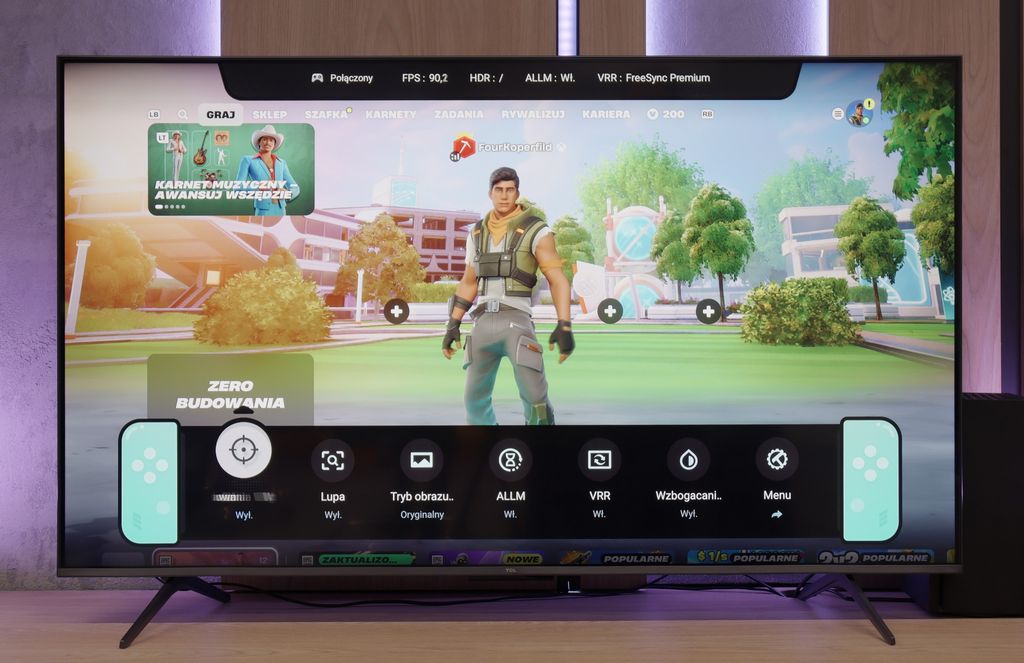
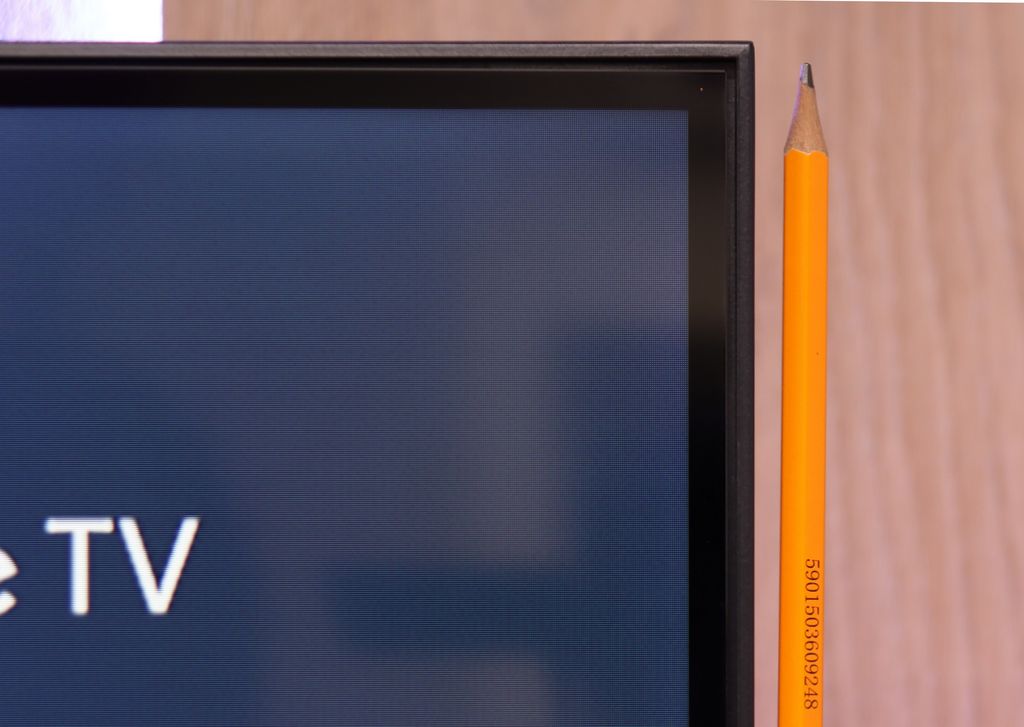
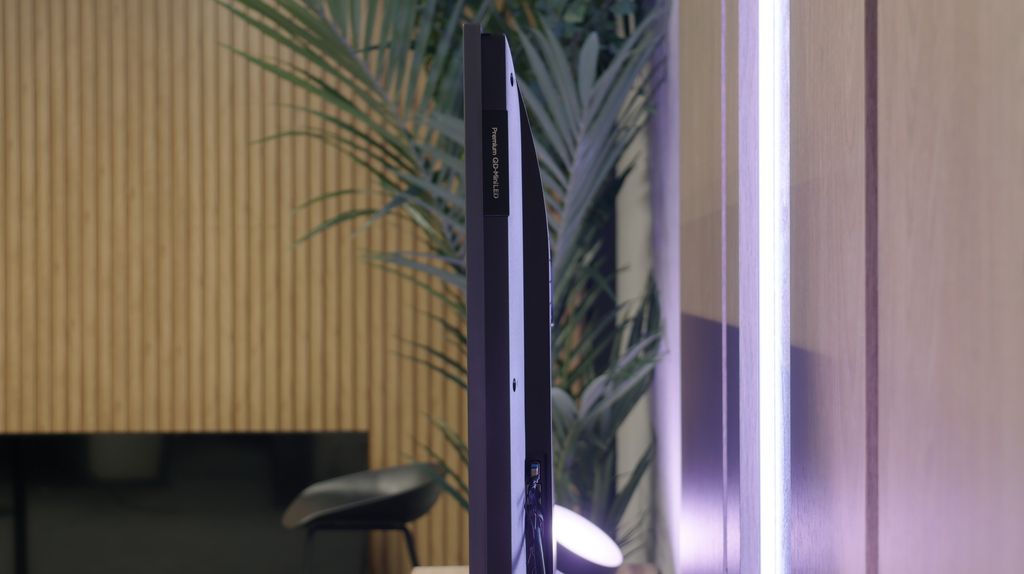
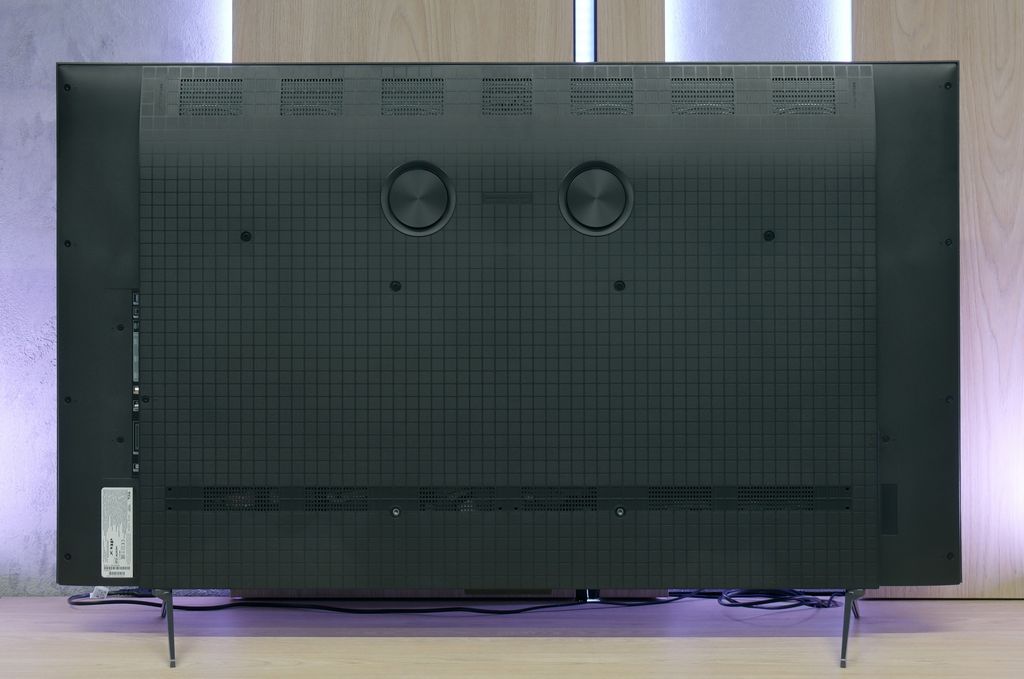
Contrast and black detail
5/10
7.3/10
Local dimming function: Yes, number of zones: 32 (4 x 8)
Local dimming function: Yes, number of zones: 180 (10 x 18)
Contrast:

Result
7,850:1

Result
4,150:1

Result
4,400:1

Result
2,500:1

Result
1,550:1

Result
114,000:1

Result
17,300:1

Result
16,200:1

Result
9,900:1

Result
4,850:1
Halo effect and black detail visibility:

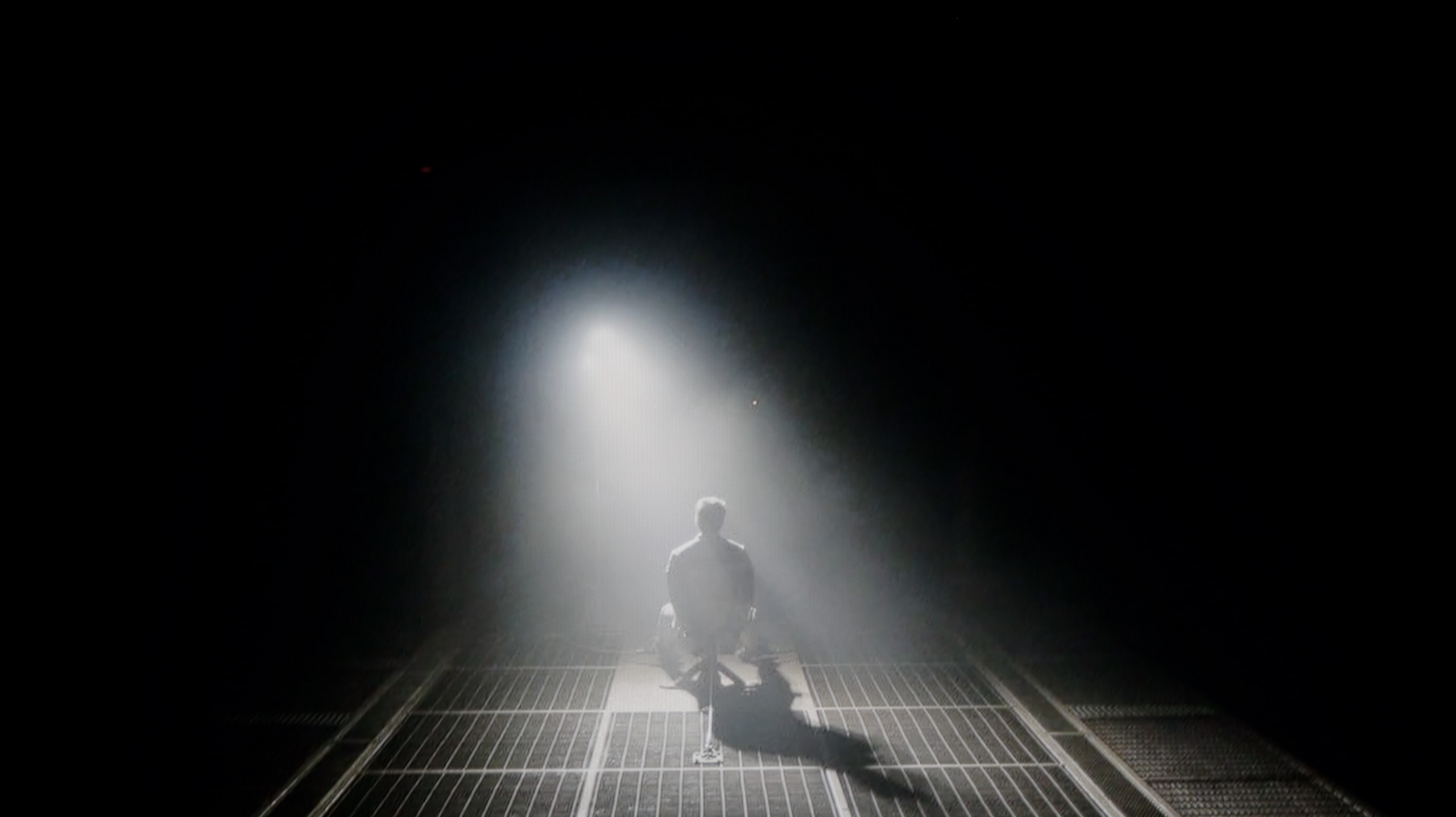
The tested Hisense E7NQ PRO in the 65-inch version features an IPS panel, which unfortunately is not known for high contrast. As a result, black appears slightly 'washed out' and at times takes on a silvery hue, which is clearly visible in our pictures. The manufacturer tried to address this by equipping the television with local dimming functionality. Unfortunately, in this 65-inch model, we only have 32 zones available, which, while somewhat helpful, is definitely not enough to achieve impressively high results—especially since the panel itself is unable to deliver incredibly deep blacks.
During testing, we observed highly variable results. In optimal conditions, it managed to reach around 7800:1, which can be considered decent; however, in more challenging scenes, the contrast dropped to around 2000:1. Such values are at best average and simply do not befit a television in this price range. Ultimately, while local dimming somewhat salvages the situation, it lacks truly deep, inky blacks and contrast that would leave a greater impression on us.
The TCL C6K is based on a VA panel, more specifically an HVA manufactured by TCL CSOT, which in itself provides solid native contrast at a level of 6000–7000:1 without the use of local dimming. However, the real strength of this model lies in the Mini-LED backlighting that allows for the dimming of individual zones. In the tested 55-inch version, we counted around 180 of these zones, and with an increase in diagonal size, this number naturally grows. For a television in this price segment, the contrast is truly impressive. In simpler film scenes, such as segments from "Oblivion," it performs excellently, and shots completely bathed in black make a great impression. Of course, due to the nature of Mini-LED technology, it is not always possible to avoid issues – in more challenging frames with many bright details, halo effects may appear or some elements may be dimmed too much (regardless of local dimming settings). Nevertheless, contrast can be considered a strong point of the C6K.
HDR effect quality
5.1/10
4.9/10
Luminance measurements in HDR:

Result
408 nit

Result
299 nit

Result
446 nit

Result
215 nit

Result
527 nit

Result
612 nit

Result
202 nit

Result
424 nit

Result
144 nit

Result
587 nit
Scene from the movie “Pan” (about 2800 nits)


Scene from the movie “Billy Lynn” (about 1100 nits)


Static HDR10


Dynamic: Dolby Vision
Dynamic: Dolby Vision


HDR luminance chart:
TCL C6K
Luminancja HDR
Luminance of RGB colors
Hisense E7NQ PRO
Luminancja HDR
Luminance of RGB colors
Based on the luminance chart, which indicates around 550 nits, it can be said that Hisense E7NQ PRO theoretically has the potential to somewhat "magically" enchant us with its image in HDR. While testing various scenes from films, we noticed that the television continually tries to balance maintaining appropriate brightness with preserving the deepest blacks possible. In favourable conditions – for instance, during a scene from “The Meg,” where the screen is flooded with bright light – this brightness can indeed impress us. In such moments, we feel that HDR actually adds that "something" to the image. Unfortunately, when more challenging shots appear on the screen with small, bright elements on a dark background, the situation looks significantly worse. The brightness then drops to 200-300 nits, which is decidedly too little to truly distinguish HDR from standard SDR.
It is clear that the television tries, but hardware limitations – mainly the limited number of local dimming zones – prevent it from fully spreading its wings. The final effect is therefore often quite uneven and just as mediocre as in the contrast tests. However, it deserves credit for its impressive coverage of the DCI-P3 colour gamut at 97%. Thanks to this, the television can display a truly wide range of colours, which, in suitable scenes, can give us at least a taste of the true HDR effect. It’s just a shame that the overall experience is not complemented by better control of brightness and contrast.
TCL C6K is a moderately bright television that can showcase its full potential under the best cinematic conditions – the maximum brightness is around 600 nits. In scenes with large, intense light sources, the HDR effect can be truly satisfying, providing a sense of cinematic sparkle. However, it is important to remember that when managing backlight zones, there are occasions where some elements are dimmed, and at times become barely visible. It is clear that there is a lack of proper algorithm optimisation here, although looking at the technical parameters in this price range, the overall construction performs exceedingly well.
Factory color reproduction
5/10
5/10


Factory Mode
After calibration


Factory Mode
After calibration
When we took our copy of Hisense E7NQ PRO out of the box, we immediately began to check the available picture modes. Among them, the Filmmaker mode seemed the most promising, although it too was not without its flaws. With standard SDR content, we noticed a clear tendency for excessive red enhancement, which made the image unnaturally warm. This was particularly evident in the comparative photo attached below. Conversely, when we switched to HDR content, the situation went in the opposite direction. This time, blue was dominant, and red was scarce, resulting in a cool effect, at times almost "shop-like" — although not as drastic as in those modes that are actually intended for display in exhibitions. As a result, in our tests assessing colour reproduction, these disturbances in colour balance led to significant errors.
Additionally, the television had issues with reproducing brightness characteristics. At lower resolutions, it noticeably brightened the darkest elements of the image, and with HDR content, the brightness curve (eotf) simply wouldn't conform as it should. Initially, the television excessively darkened the smallest details, only to then overly brighten larger areas. Fortunately, the E7NQ PRO provides us with plenty of calibration tools, so knowing that there is potential within it, we decided to take matters into our own hands and try to adjust it to eliminate these problems.
In this year's TCL televisions, the Filmmaker mode has appeared, and it must be admitted that it is definitely the best choice straight out of the box. This is the mode we recommend for daily watching of films and series. Unfortunately, as is often the case, the best does not mean perfect. In the case of SDR content, the image was too warm, as the red was quite pronounced in the white balance. Conversely, with HDR content, we had the opposite impression – the image became cooler than it should have been due to an excess of blue. Additionally, the brightness characteristics sometimes led to overexposure. In practice, this resulted in quite noticeable errors in colour tests, which are difficult to accept in a mode advertised as "from the creators."
Color reproduction after calibration
7.1/10
7.5/10




Thanks to the tools available in E7NQ PRO, we managed to extract quite a decent image from it, especially with lower quality content. After refining the white balance of the SDR materials, the colours look much more natural, and what we see on the screen seems closer to the vision that the manufacturer intended to present. Additionally, we improved the brightness characteristic (Gamma), which means the television is no longer prone to excessive brightening, and everything presents itself distinctly better than before our intervention.
We also managed to achieve some results with HDR materials, although it isn’t quite as rosy here. Indeed, the white balance has approached an acceptable level, but the problem lies elsewhere. It concerns the EOTF curve, which is the way the television manages brightness and tonal range of the image. At first glance, it might seem that the biggest issue only relates to mid-tones being overly brightened. However, after more detailed testing and enabling the filters for displaying the EOTF curve, it becomes apparent that the receiver tends to brighten the entire screen. This appears to be a limitation arising from the small number of local dimming zones and generally modest brightness management capabilities. Such hardware limitations are simply insurmountable. Despite this, after our calibration, the image is noticeably better than at the outset. One just needs to be aware that in terms of contrast and brightness management, this model has its limits, which even good calibration cannot fully overcome.
Thanks to the white balance adjustment, it was possible to significantly reduce the C6K's tendency to distort colours, which translated into a very good final result. After calibration, we will no longer observe the effect of excessive warmth in SDR scenes or overly cooling the image in HDR. However, it is worth taking a closer look at the brightness characteristics. In SDR content, it is difficult to have major objections – the image looks really good, especially in older films, television programmes, or materials from YouTube. It fares much worse in the case of HDR content. An analysis of the EOTF curve suggests that everything is fine, but in practice (EOTF in films), the limitations of the design become apparent. The television tends to over-brighten the smallest parts of the frame, and in other situations, it can dim an entire scene too much. The effect of calibration is therefore evident, and in terms of colour, the C6K has gained quite a lot, but certain limitations arising from local dimming and, in fact, from its management by the C6K simply cannot be overcome.
Smoothness of tonal transitions
9.2/10
9.5/10












We must honestly admit that the fluidity of tonal transitions in this television is among the best we have had the opportunity to test in 2024. Even in really demanding scenes, we hardly notice any distinct "steps" between colours. Of course, with a keen eye, one can detect minor flaws, but those are at a level that is virtually microscopic. You really need to have a very "alert" eye to catch them. This, in turn, means that while watching even the most complex shots in a full palette of colours, one can simply focus on the story and visual experiences without the irritating, artificial effect of posterisation.
The transitions between colours in the C6K are very smooth, and it is hard to fault any banding. The image looks natural, and any minor imperfections can only be noticed on bright test patterns – and that with really careful viewing. In everyday use, the effect is simply excellent, and one can confidently say that in this category, the C6K performs remarkably well.
Image scaling and smoothness of tonal transitions
6/10
5/10
Smooth transition function

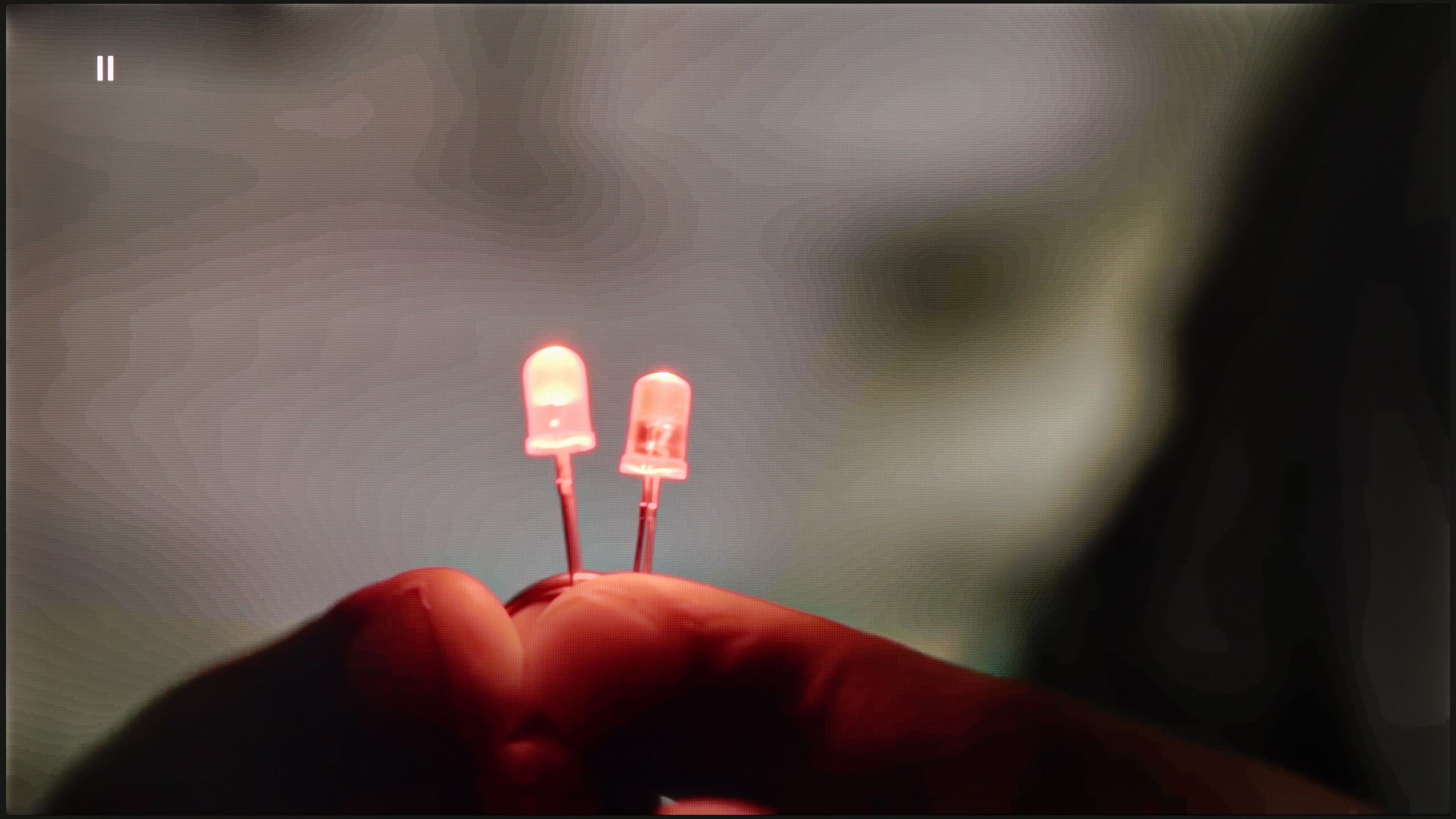
Image without overscan on the SD signal


When it comes to the function of smoothing tonal transitions in lower quality materials, the "smooth and gradient image" feature in Hisense E7NQ PRO unfortunately does not impress. At the lowest setting, the change is hard to notice at all – it is rather a cosmetic improvement. Switching to "Medium" mode yields a noticeable effect, but it is still nothing special, and in the process, the television begins to excessively interfere with other elements of the image, which can look unnatural.
Moreover, image scaling is rather average. On the test screen, where a portrait of a model and text are displayed, slight jagged edges are visible, making the overall appearance less smooth and aesthetically pleasing than one would expect in this class of device. It's simply difficult to talk about truly effective improvement in the quality of lower resolution.
TCL C6K performs quite well in terms of scaling. Lower quality materials look acceptable, and the absence of overscan issues means that the image is displayed in full, without cropping. However, one cannot expect miracles – very low-quality content will not gain a new life here, as the image processor has its limitations. On thin lines or details, there is a noticeable characteristic jerking, which reveals the lack of advanced image enhancement algorithms. It is also a pity that the C6K lacks the feature for smoothing tonal transitions – in older films or video materials, colour banding can be noticeable and can be distracting during longer viewing sessions.
Blur and motion smoothness
7/10
7.3/10

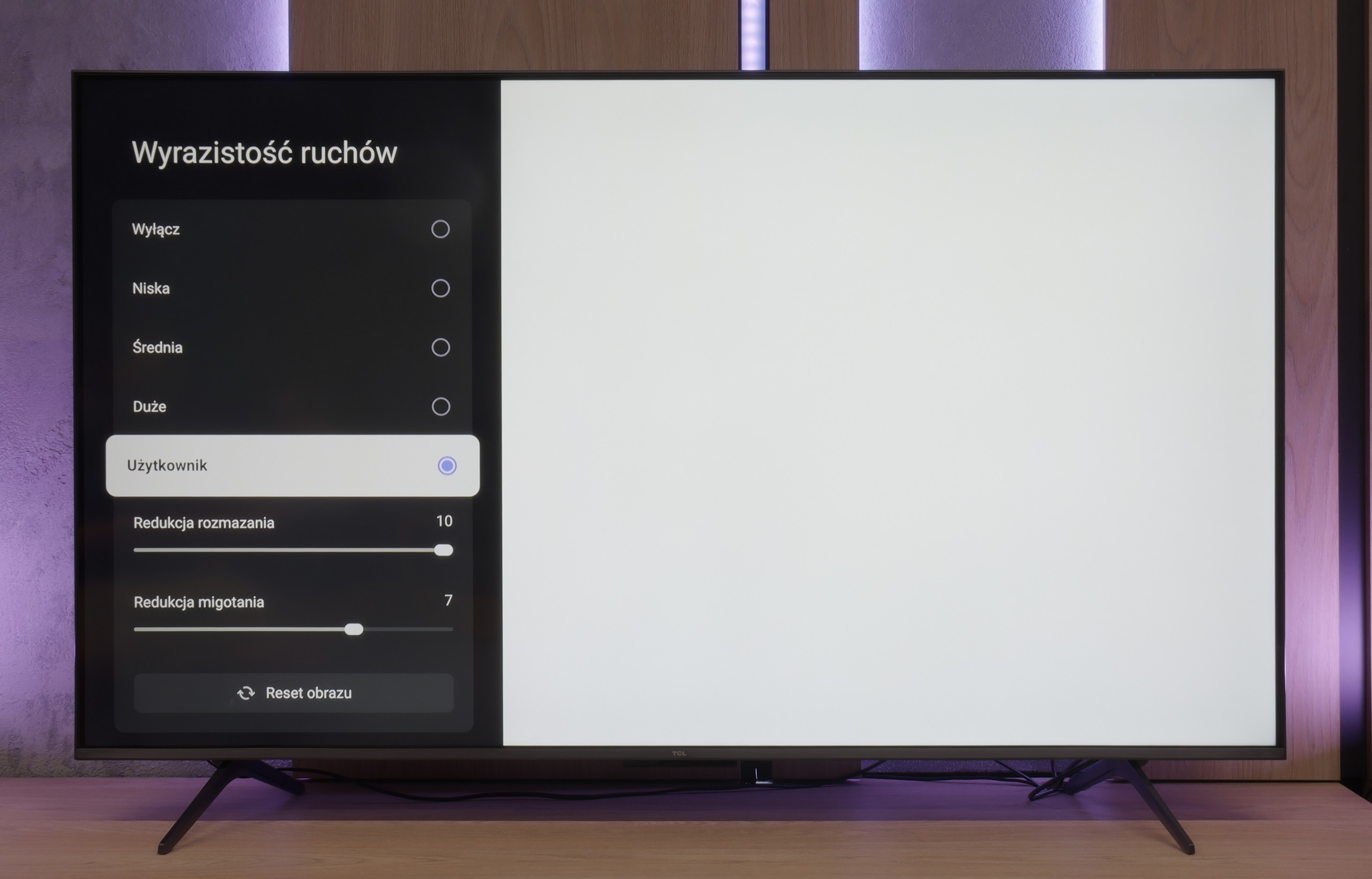
Blur (native resolution, maximum refresh rate):






Blur (BFI function enabled):



Thanks to the use of a 144 Hz panel, E7NQ PRO performs excellently with nearly every type of content. Whether we are watching fast-paced matches, dynamic games or action films – the smoothness of motion leaves a good impression. When it comes to films, the manufacturer has equipped the television with two key tools: "motion blur reduction" and "judder reduction". Each of these functions can be adjusted on a scale from 1 to 10.
At lower values, the processing is subtle, barely noticeable, and gently smooths out motion without compromising the cinematic quality of the image. The higher we move up the scale, the more the television interferes with the presented material, smoothing out motion more intensely, and consequently – minimising any judders or micro-cuts. Conversely, the highest settings can resemble the so-called "soap opera effect", which makes the image appear excessively smooth, slightly losing its filmic atmosphere. However, with such a scale, we can find a happy medium, adjusting the smoothness of motion to our own preferences.
The TCL C6K utilises a 144 Hz panel, which is a significant advantage in this price range. This is an important step forward compared to the previous model, the C655 PRO, which only offered 60 Hz in 4K. The difference is especially noticeable when watching sports or gaming – the ball, players, or fast action in a game are shown more clearly and without losing details. Interestingly, the panel can also operate at 240 Hz, which the manufacturer does not mention in the official materials. We will return to this topic when discussing the PC gaming mode.
TCL has also added a feature for those watching films: "Motion Clarity", which allows users to adjust the image to their liking using two simple sliders. One can either keep the film frame visible or opt for a very smooth, almost theatrical effect. This way, everyone can find settings tailored to their taste.
Console compatibility and gaming features
8.5/10
9.8/10
- ALLM
- VRR
- VRR range48 - 144Hz48 - 240Hz
- Dolby Vision Game Mode
- Correct implementation of HGIG
- 1080p@120Hz
- 1440p@120Hz
- 4K@120Hz
- Game bar

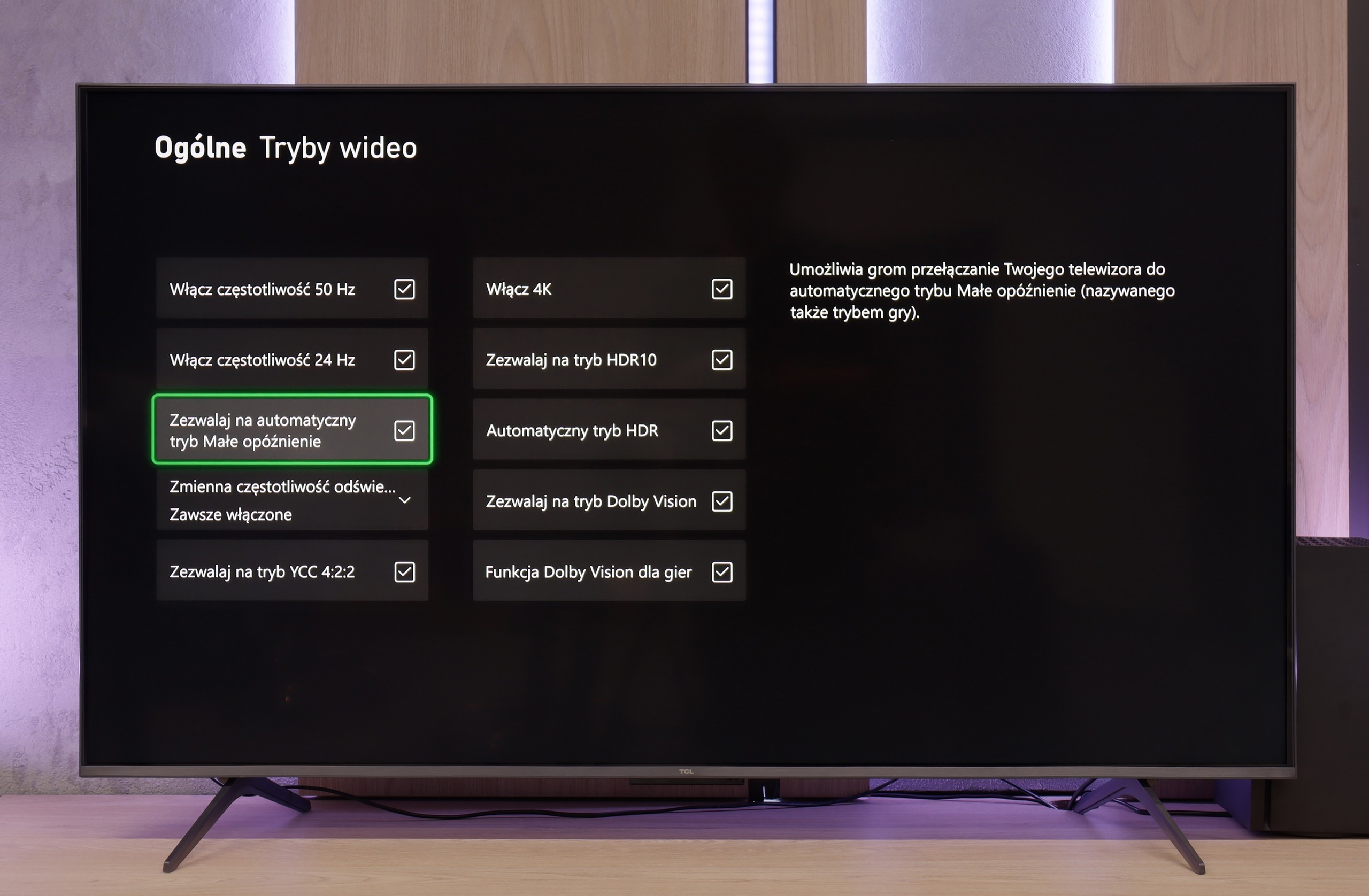

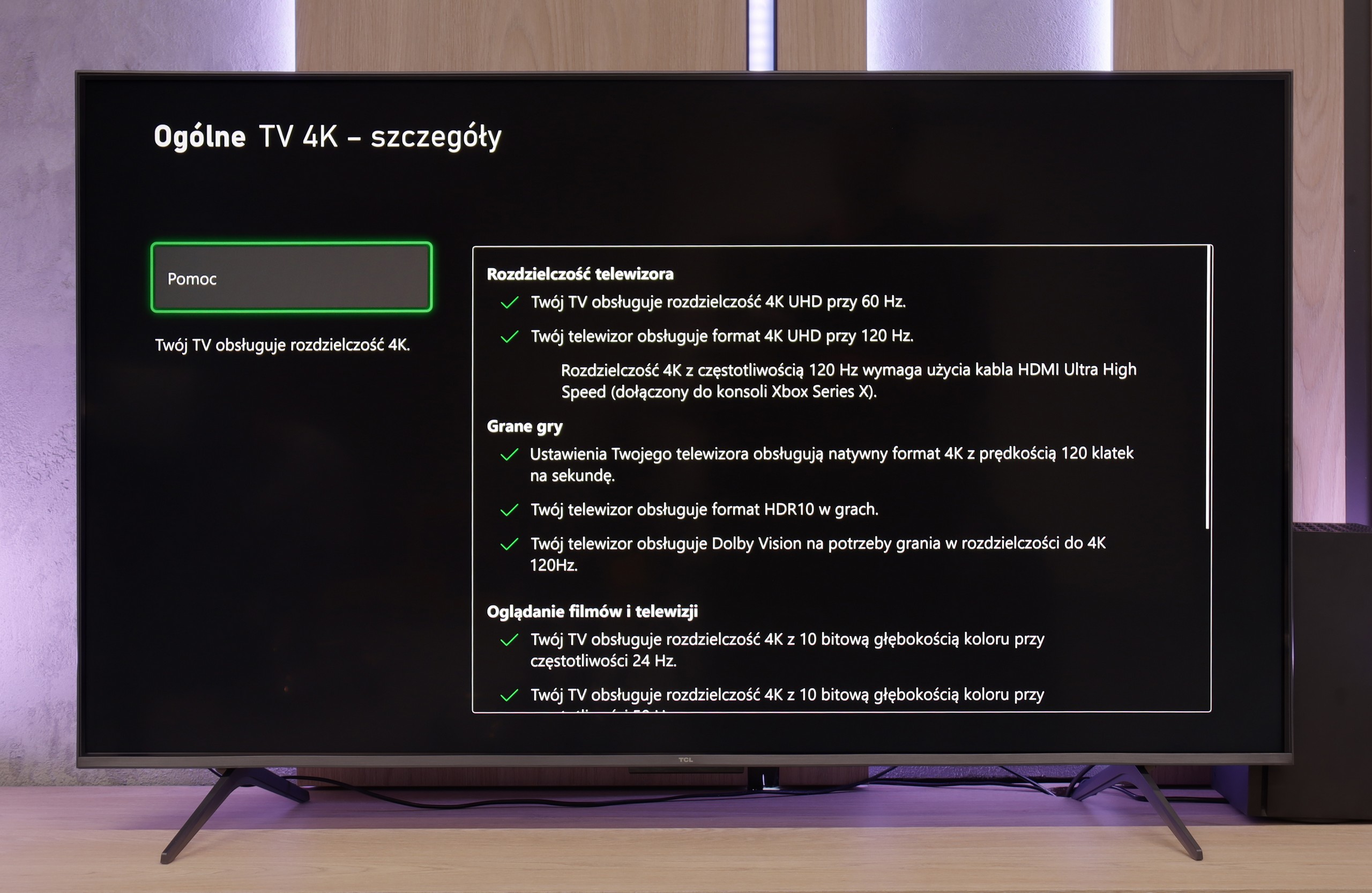

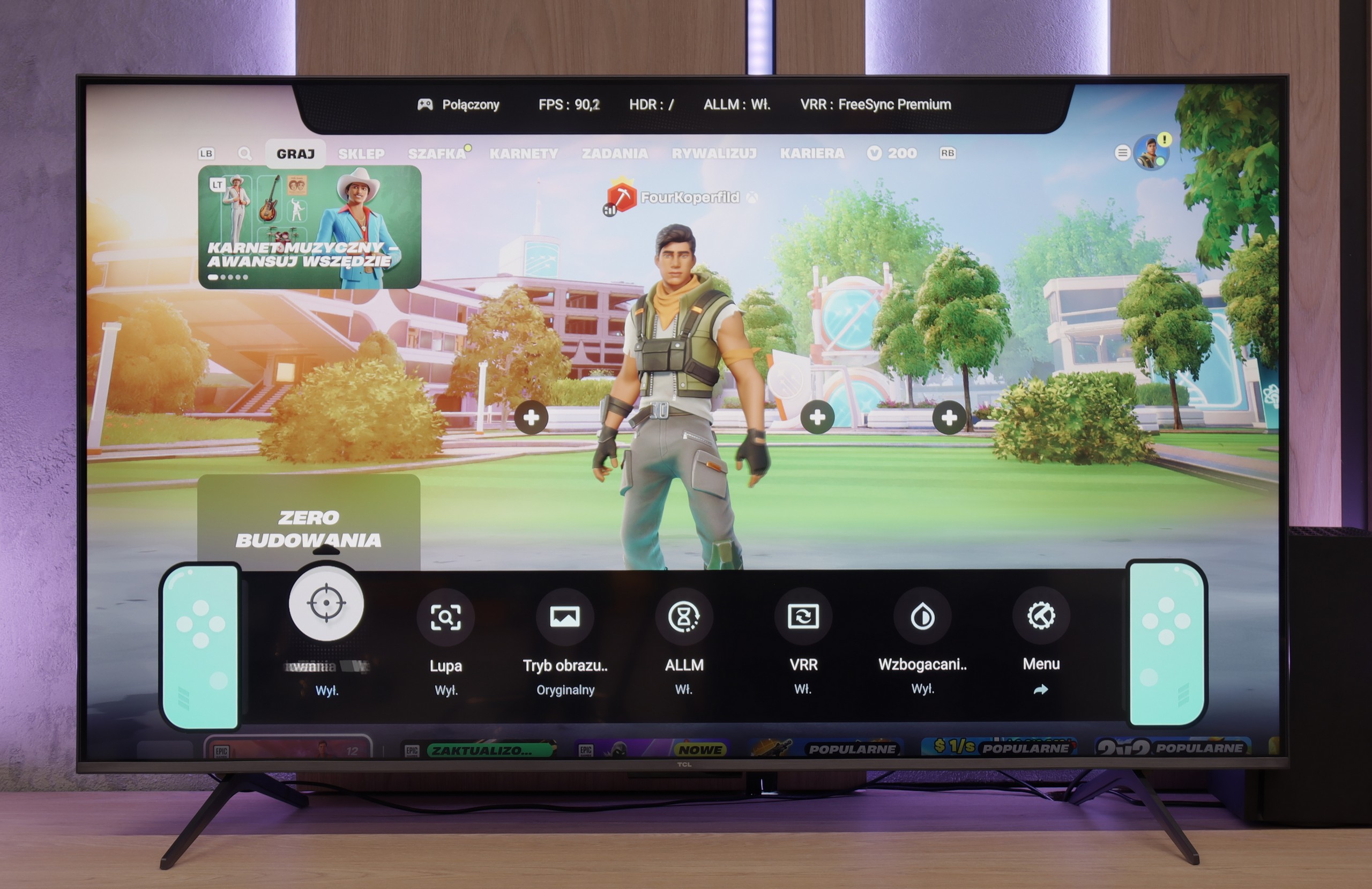


If we sometimes enjoy turning on the console and immersing ourselves in the world of games for long hours, E7NQ PRO can make quite an impressive impact. Thanks to the 144 Hz refresh rate, gameplay is surprisingly smooth, and support for HDMI 2.1 and VRR ensures that the picture doesn't 'tear' even during the most dynamic actions. Additionally, there's ALLM, which automatically sets the lowest latency as soon as we switch to the console – so we don't have to fiddle with the options ourselves.
A major plus is also the ability to run games in Dolby Vision, making colours and contrast simply look better. Hisense has also added a clear 'gamebar', allowing us to constantly monitor the most important parameters and change settings without leaving the game. The only thing we might regret a bit is the lack of HGIG support. While it may not be a crucial element, it could matter to some gamers aiming for the most faithful representation of the creators' vision. Nevertheless, in practice, the E7NQ PRO performs excellently and provides truly enjoyable gaming experiences.
The TCL C6K is a television that can confidently be described as equipment designed with gamers in mind. Here we have 4K at 144 Hz, VRR support, automatic game mode (ALLM), and Dolby Vision Gaming. Additionally, there is a practical Game Bar, which is a panel with the most important settings easily accessible – useful when we want to quickly change something during gameplay (e.g. screen aspect ratio: Yes, it can be done!). The wide range of VRR is also noteworthy, reaching up to 240 Hz. However, this option is primarily for PC gamers who will drop the resolution below native 4K. At that point, the television can spread its wings and demonstrate extra fluidity, especially in fast-paced esports titles. In the case of consoles, we stick to the classic limit of 120 Hz, but the possibilities are still really broad. The only drawback might be slight ghosting, which can sometimes be seen in dynamic scenes. Apart from that, though, the C6K offers everything that gamers expect from a television.
Input lag
9.9/10
9.7/10
SDR
HDR
Dolby Vision
In this regard, Hisense E7NQ PRO really delivers. At a frequency of 60 Hz, we recorded around 15 ms, and at 120 Hz, the latency drops even to 6 ms, allowing for very quick response and smooth control in games. It is also worth mentioning that even in Dolby Vision mode, the input lag does not increase drastically. This means we can enjoy better image quality without having to sacrifice responsiveness, which will certainly please any avid gamer.
In terms of input lag, the TCL C6K performs exceptionally well. With 120 Hz content, the latency is around 10 ms, and at times even less. This is a level at which the response is practically instantaneous, and it is difficult to find any issues. With 60 Hz materials, the result is around 18 ms – still a very good outcome, entirely sufficient for comfortable gaming.
Compatibility with PC
7.6/10
8.6/10

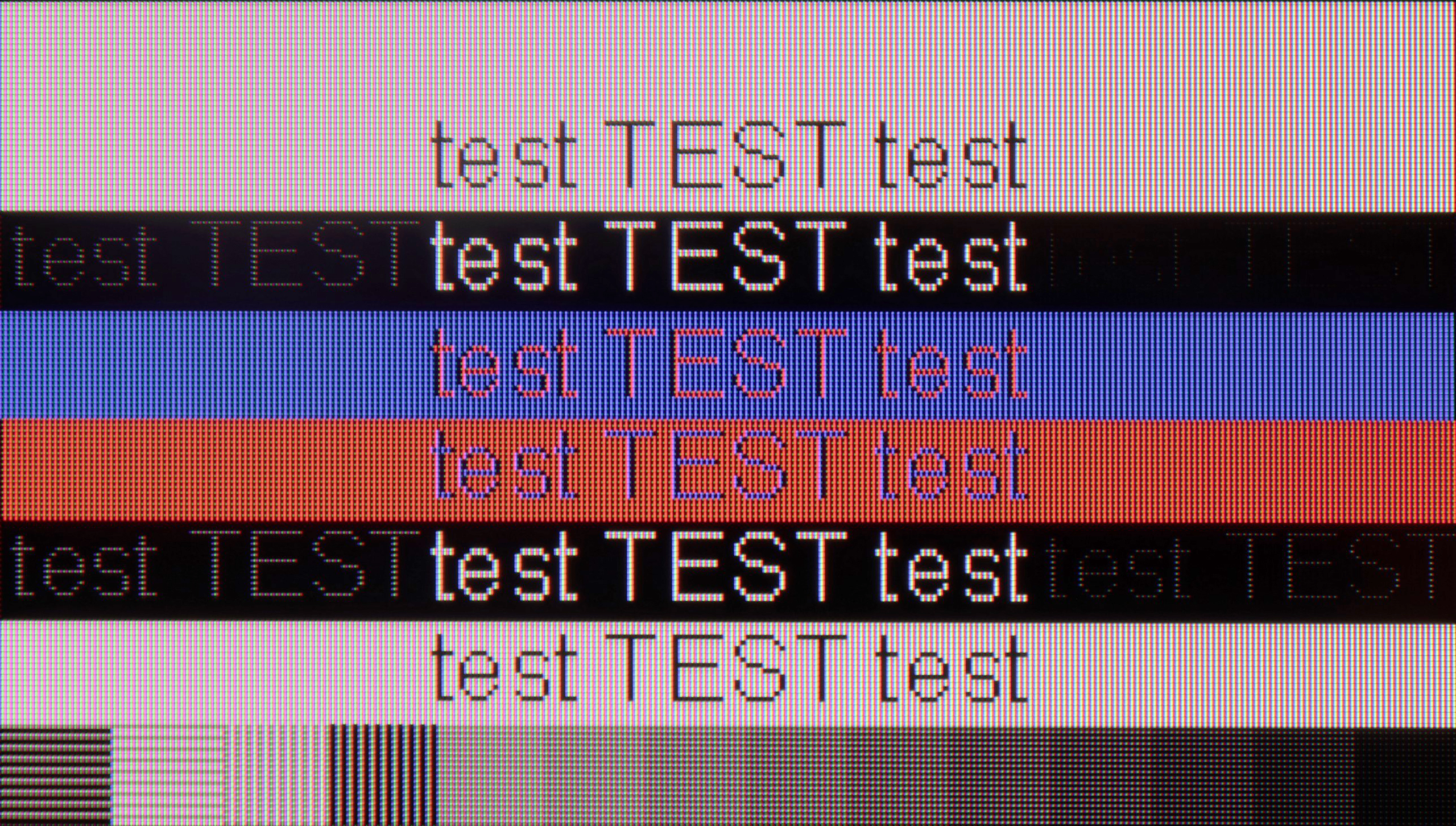
By connecting the E7NQ PRO to a computer, we will have no reason to complain. The overall readability of the fonts is quite good, although with very thin, horizontal lines (the so-called “serifs” of letters) we noticed a slight dimming. This is not a major issue, but it's worth mentioning if we plan to spend long hours in text editors or browsers.
As for gaming on PC, the television shows its true colours. Support for G-Sync, connection to a 144 Hz panel, and low input lag ensure that even the most demanding titles run smoothly and responsively. As a result, we have a screen that will work well not only with a console but also as a solid “window” to the world of PC entertainment.
After connecting to the TCL C6K computer, it performs wonderfully. At its native resolution, we have 4K at 144 Hz, and if we lower the resolution, it can even reach 240 Hz. Additionally, the television communicates well with Nvidia and AMD cards – it supports both G-Sync and FreeSync. It's also difficult to criticise for office work. Fonts are sharp and readable thanks to 4:4:4 chroma support, and any minor imperfections are so small that they simply go unnoticed during normal use.
Viewing angles
6.5/10
3/10
In the case of Hisense E7NQ PRO, the viewing angles are definitely a strong point, thanks to the IPS panel. This means that when we look at the screen even from a significant angle, the colours and brightness do not "wash out" as much as they do in televisions with a VA panel. Of course, compared to OLED or QD-OLED screens, where the image remains practically unchanged from every angle, IPS still falls short. Nevertheless, among LCD televisions, it is hard to find a solution that guarantees viewing angles as good as those offered by IPS. Unfortunately, everything comes at a cost – in this case, one has to come to terms with average blacks and lower contrast.
In the TCL C6K, the viewing angles are typical for a VA panel. Sitting directly in front, the picture looks very good, but any shift to the side results in a noticeable drop in colour saturation and brightness. The difference is particularly evident in colourful scenes – the hues become washed out, and the contrast loses its depth. Compared to IPS panels, this is a clearly weaker performance, although the trade-off is better black levels and higher native contrast – “you win some, you lose some.”
TV efficiency during daytime
6.2/10
6.4/10

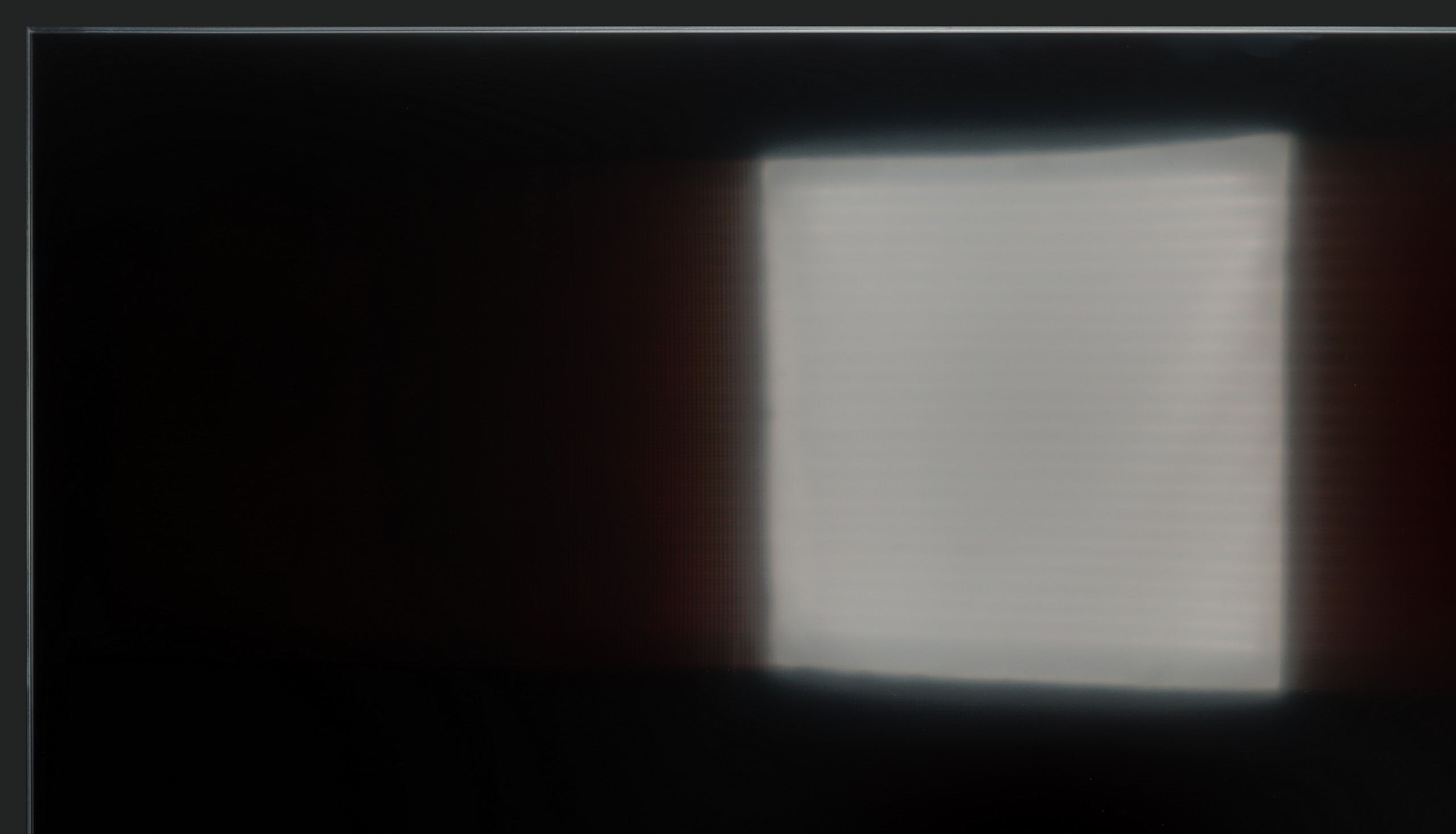


Matrix brightness
Average luminance SDR
TCL C6K: 532 cd/m2
Hisense E7NQ PRO: 478 cd/m2
On a bright day, E7NQ PRO performs quite well. The "satin" display diffuses light effectively, preventing reflections and glares from turning into distracting "spots" on the screen. With an average brightness of around 500 cd/m², you can comfortably watch television in a sunlit room without much struggle to see details or clear content. It's perhaps not at the level of the highest premium models, but in everyday use, it still performs quite decently.
TCL C6K performs quite well in bright lighting conditions. The panel offers decent brightness – in SDR content, it reaches around 550 nits, which allows for comfortable television viewing in a moderately lit living room, and even on days with strong light coming through the windows. This means that daytime viewing does not require complete darkening of the room. It's also worth noting that the screen coating does quite a good job of reducing reflections, so the television does not turn into a "mirror" even with strong lighting. However, this is not on the level of top models with more advanced anti-reflective coatings – in very challenging conditions, such as with large glazing, reflections will be noticeable.
Details about the matrix
Subpixel Structure:

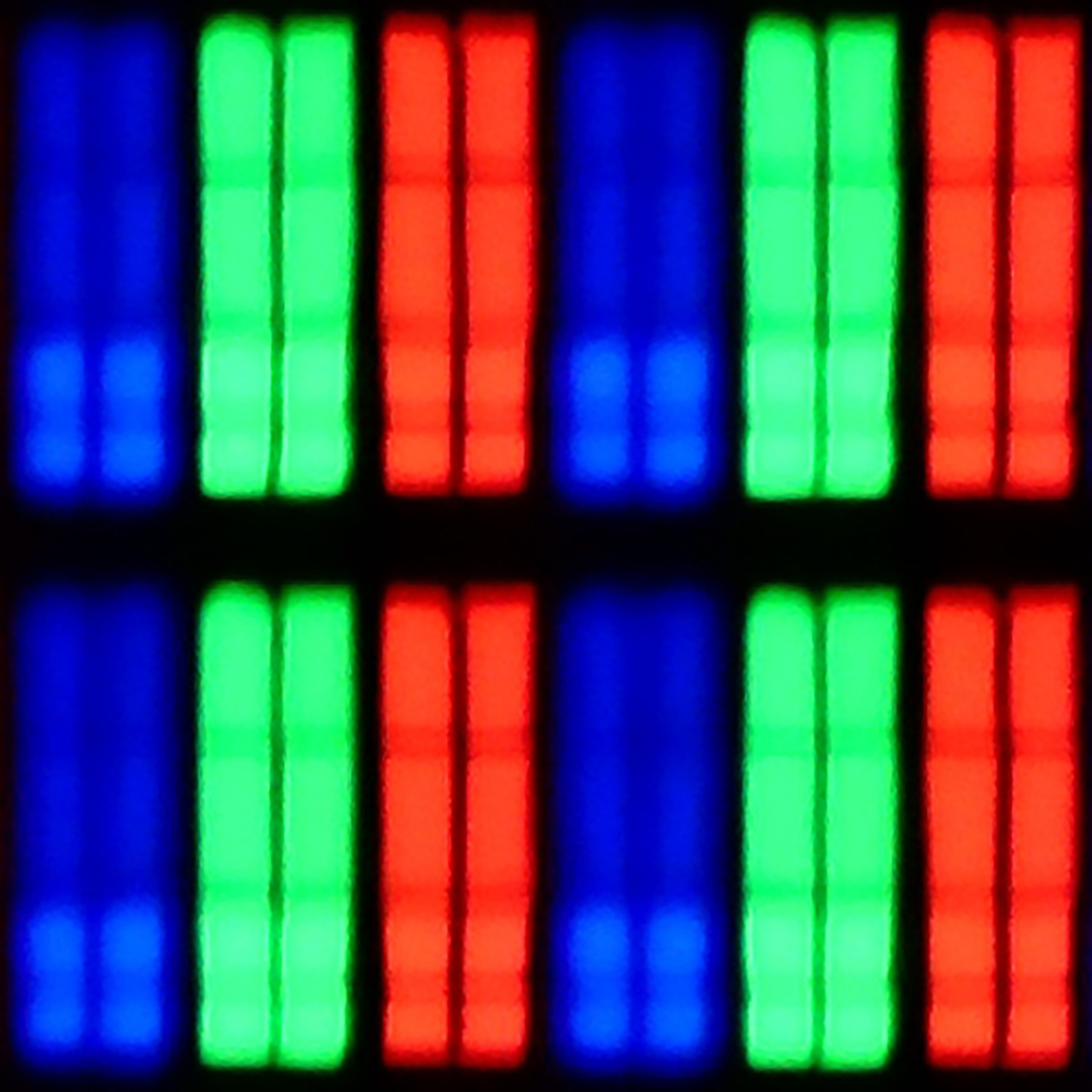
Panel uniformity:


Hisense E7NQ PRO
TCL C6K
TV features
8.9/10
7/10
- HDMI inputs2 x HDMI 2.0, 2 x HDMI 2.1 48Gbps2 x HDMI 2.0, 2 x HDMI 2.1 48Gbps
- Other inputsRCA (Chinch)
- OutputsToslink (Optical audio), eARC (HDMI), ARC (HDMI), Mini-Jack (Headphones)Toslink (Optical audio), eARC (HDMI), ARC (HDMI)
- Network InterfacesWi-Fi 2.4GHz, Wi-Fi 5GHz, Ethernet (LAN) 100MbpsWi-Fi 2.4GHz, Wi-Fi 5GHz, Ethernet (LAN) 100Mbps
- TV receptionDVB-T, DVB-T2, DVB-S, DVB-S2, DVB-CDVB-T, DVB-T2, DVB-S, DVB-S2, DVB-C
Classic features:
- Recording to USB (terrestrial TV)
- Recording programming
- Picture in Picture (PiP)
- RF remote control (no need to aim at the screen)
- Backlit remote control
- Teletext
- Audio only mode
- Possibility to connect Bluetooth headphones to the TV
- Possibility to simultaneously use Bluetooth headphones and the TV speaker
Smart features:
- AirPlay
- Screen mirroring (Windows Miracast)
- Wyszukiwanie głosowe
- Voice search in native language
- Ability to connect a keyboard and mouse


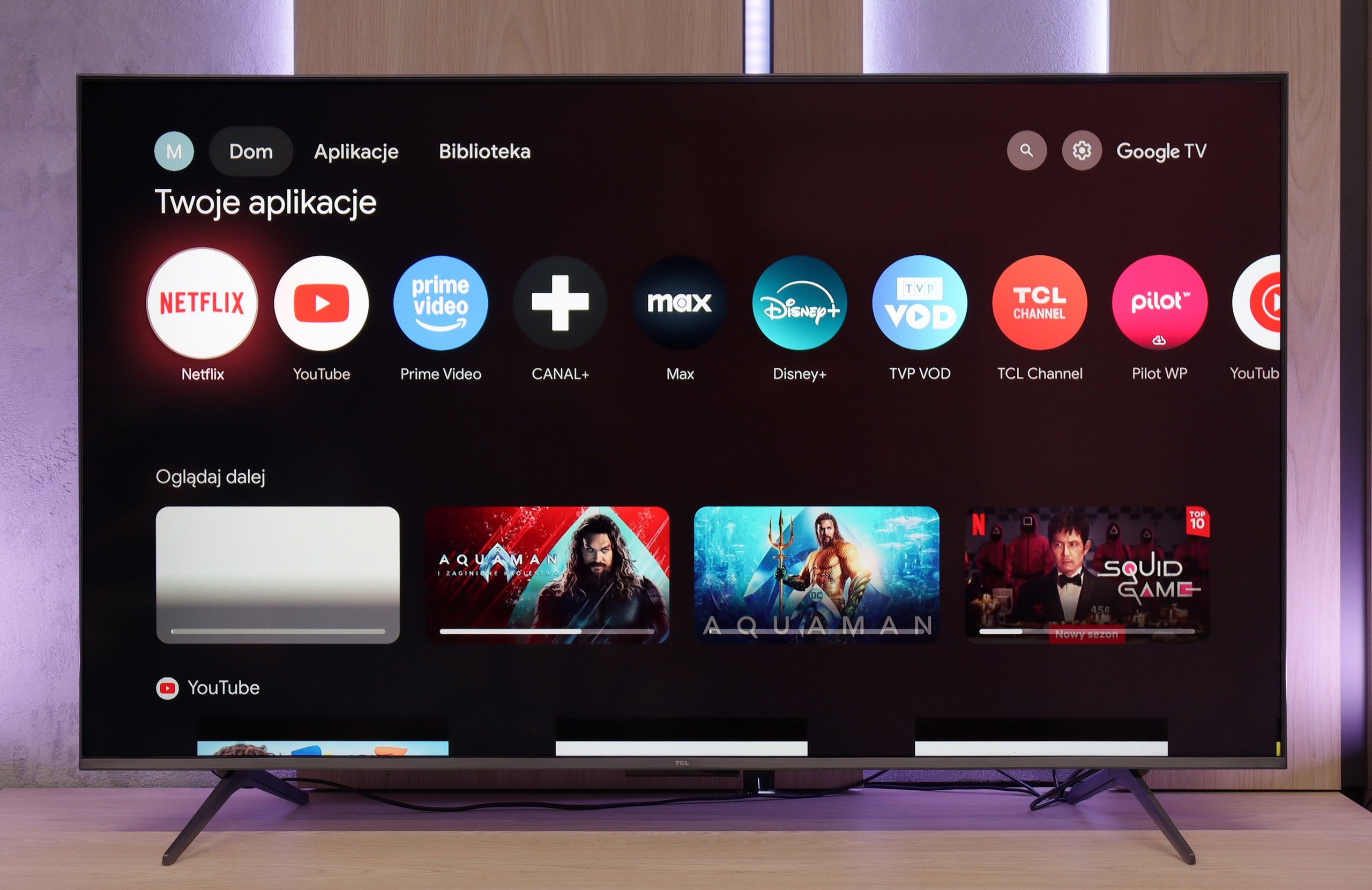
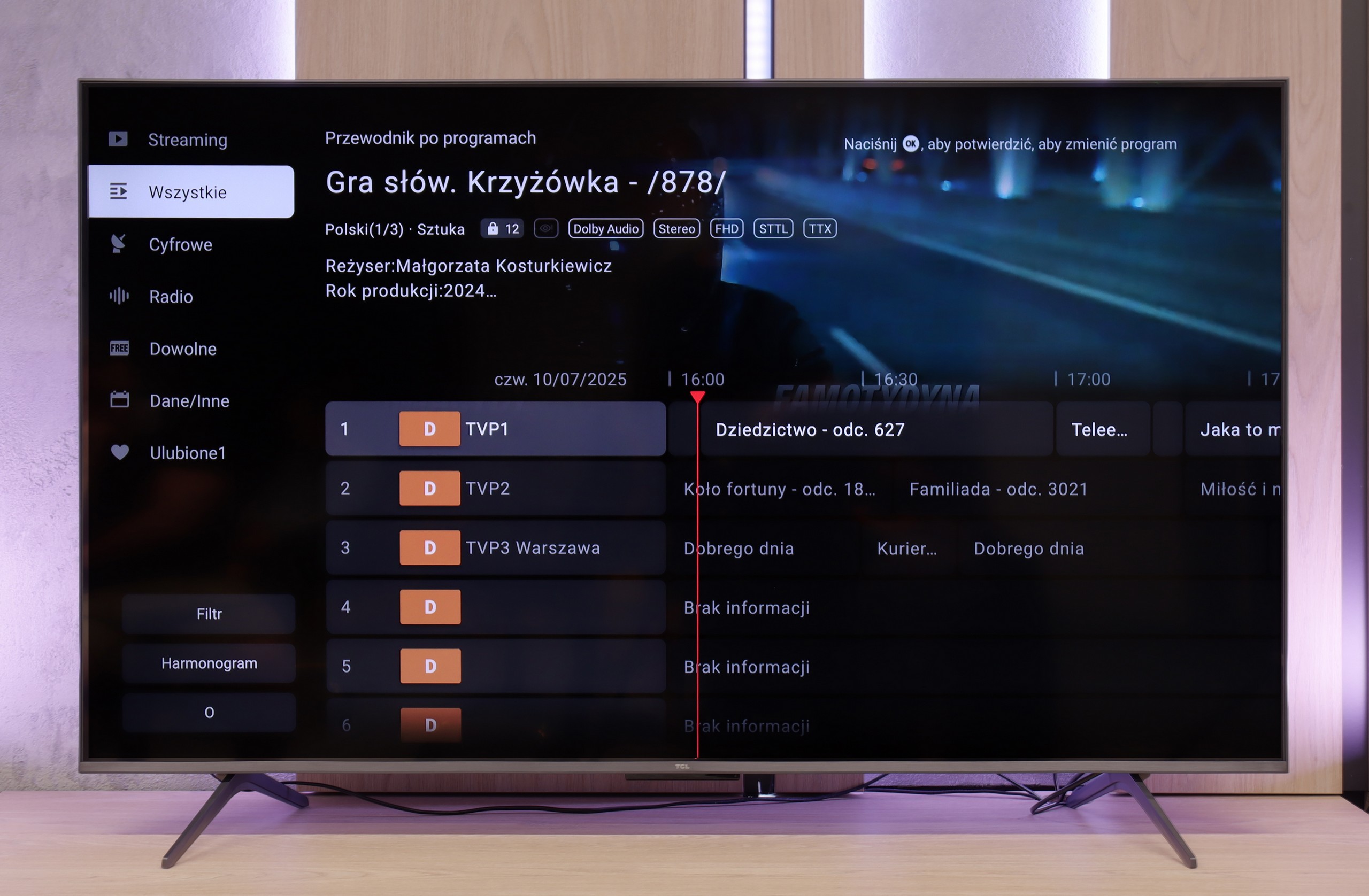
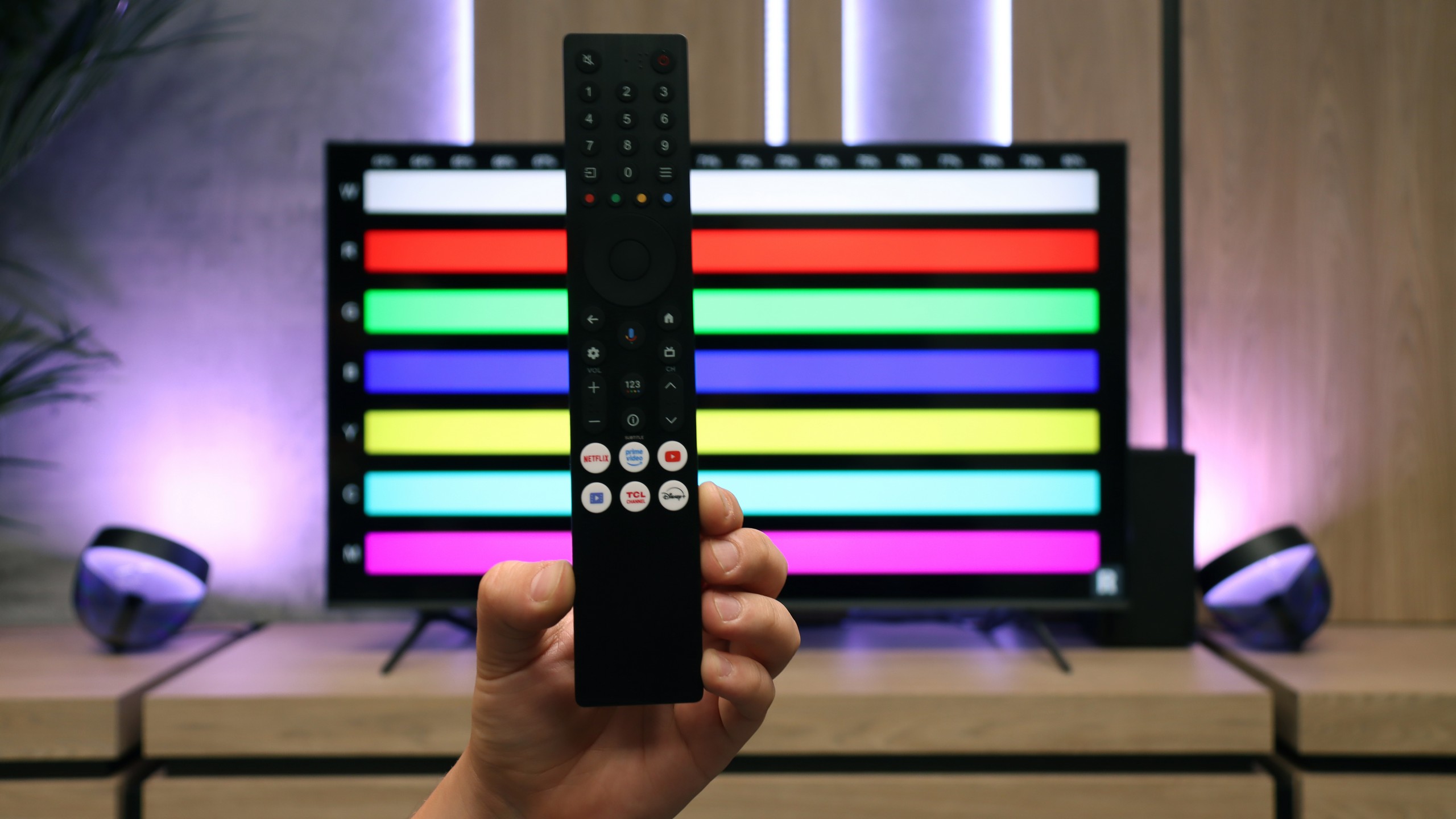
Hisense E7NQ PRO operates on the VIDAA system, which has recently made significant progress. Most popular applications can be found here, although unfortunately, some music platforms like Spotify or Tidal are missing. Nevertheless, navigating the menu is quite enjoyable, and the responsiveness is at a satisfactory level. Yes, there are occasionally minor "stutters," but this is not something that will overwhelm our daily usage experience.
On the plus side, we can appreciate the support for voice search in Polish, which makes it easier to find favourite content without the tedious process of typing letters one by one. The television also offers plenty of additional options: we can record programmes, use AirPlay and mirroring, as well as enjoy extensive wireless connectivity options (Wi-Fi and Bluetooth). Perhaps it lacks a backlit remote or Picture-in-Picture (PiP) mode, but these are rather niche features, so few will truly feel their absence. In everyday use, we simply have a solid foundation of useful tools and convenient solutions.
Multimedia Features: Google TV
The strongest aspect of the TCL C6K is undoubtedly the Google TV system. It gives the television character and provides an edge over many competitors. We have a full package of services here – from support for popular streaming apps, to screen mirroring support, and even AirPlay, allowing iPhone users to feel right at home. Additionally, it features Google Assistant (recently with the Gemini AI version), which not only answers questions but also efficiently executes simple commands, such as changing channels or searching for content on VOD services. The system operates quite responsively, although one must mention a certain drawback – the awkward translations in the Polish menu can elicit a smile but sometimes require a moment of reflection to decipher what is actually meant.
Classic Features
When it comes to classic television functions, the TCL C6K performs rather average. There is no USB recording or PiP mode, which may be disappointing for some. However, the manufacturer has not forgotten the basics – teletext television and a clear EPG are available, which still matter to some users. In everyday use, the Bluetooth support for external audio devices is also handy – a simple way to connect a speaker or headphones, which can be a practical solution for seniors. Besides that, it is hard to find elements here that would distinguish the C6K from its competitors – it is simply a solid, but standard package of basic functions.
Playing files from USB
5.2/10
8.9/10
Supported photo formats:
Maximum photo resolution:

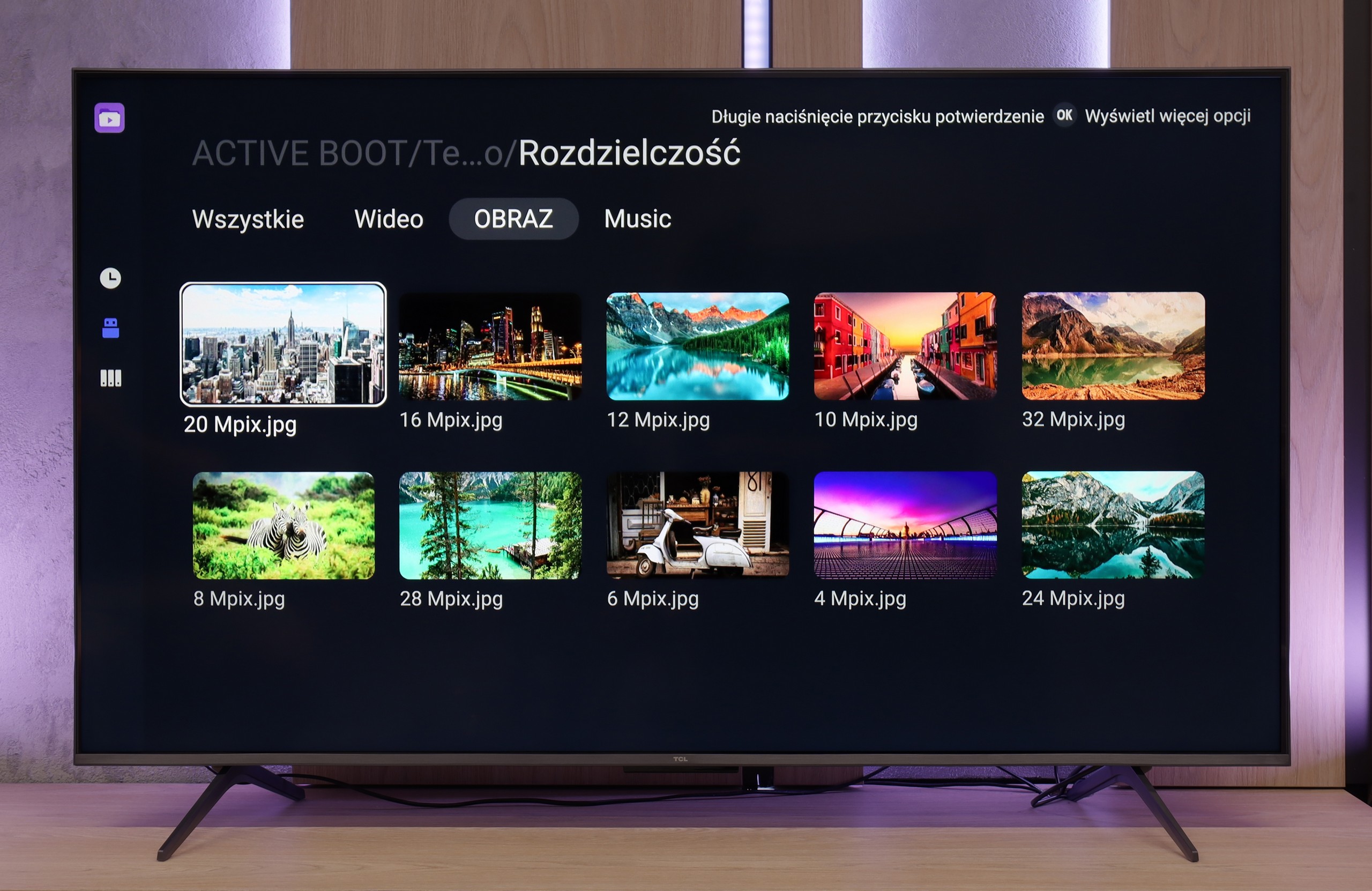
If we are counting on comfortable viewing of films with subtitles directly from a pendrive, we may unfortunately be disappointed. Just like with the previously tested A7NQ, we encounter a rather peculiar situation here: the television does not display subtitles, even if we correctly place them on the device and try various formats. Paradoxically, we find options to change the colour and appearance of the font, but as they say – what's the point if we still won't see anything?
In the case of other files, such as photos or music, the E7NQ PRO manages without major problems, playing the most popular formats without a hitch. Unfortunately, for those who would like to use the television as a multimedia player, the lack of functioning subtitles is quite a nuisance.
The built-in media player in the TCL C6K performs really well - almost all popular file formats work without significant issues. There are indeed minor exceptions, particularly with less common codecs or unconventional video file configurations, but in everyday use, this is rarely noticeable. The biggest advantage, however, is that the television runs on Google TV, which provides complete freedom in choosing additional software. If someone encounters a file that the standard player cannot handle, it's enough to install an alternative - such as VLC - and the problem disappears.
Apps
7.7/10
9.6/10














































Sound
7/10
6.5/10
- Subjective sound quality:7/106.5/10
- Dolby Digital Plus 7.1:
- Dolby True HD 7.1:
- Dolby Atmos in Dolby Digital Plus (JOC):
- Dolby Atmos in Dolby True HD:
- DTS:X in DTS-HD MA:
- DTS-HD Master Audio:
When it comes to the built-in speakers, Hisense E7NQ PRO pleasantly surprised us. Of course, it is not on the level of a proper soundbar or home cinema system, but in everyday conditions, it performs quite well. During our tests, the dialogues remained clear, and the sound was sufficiently clean and spacious, so there was no immediate need to invest in additional audio equipment.
It also deserves credit for supporting multiple audio formats – from Dolby Atmos to the less common DTS:X. As a result, if we come across the right source materials, we can expect a more immersive, spatial experience. Although in terms of sound, it is still primarily at the level of a decent basic setup, Hisense E7NQ PRO should satisfy most users who simply want to turn on the television and hear clear, unblemished sound.
In terms of audio, the TCL C6K performs quite well. The manufacturer has been boasting about its collaboration with the Onkyo brand for several years, and it indeed translates into sound quality. The sound is pleasant, with clear mid-tones and a fairly crisp top end, and overall it feels well-balanced. Of course, it can't replace a full-fledged soundbar, especially in terms of bass depth, but as far as built-in speakers in a television in this price segment go – it's really very good.


